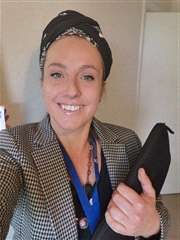Tutor HuntResources Communication Skills Resources
Science Drawings At The Royal Society
The changes in the way scientists produce images and share them within their community and the public, was the subject of a day of hands on activities and lecture at the Royal Society
Date : 11/02/2015
Author Information

Uploaded by : Alice
Uploaded on : 11/02/2015
Subject : Communication Skills
For the youngest audiences in particular, it is very difficult to imagine that there was a time, when a scientist had to be good at drawing, or at least at finding someone able to do it in his place.
Early biologist, botanists, ethologists, and even chemists, were forced to use their artistic skills to understand and explain the rules of the world that they were trying to unlock. Some of them weren't so scientific, in a modern sense, at the contrary their works are very imaginative, but they are still interesting, as the following books illustrations.
The changes in the way scientists produce images and share them within their community and the public, was the subject of a day of hands on activities and lecture at the Royal Society, last Saturday, the 25th of October. The title of the event was "The Big Draw: Drawing Science" and was part as The Big Draw festival,
Young children, and curious adults as me, were "pushed" to take inspiration from rare scientific illustrations pulled from the Royal Society archives, exploring areas where science and art overlap.
Because children like drawing, involving them in making their own scientific illustration, copying original drawings, complete animals half drawn, or building mosaics with the basic crystals shapes, can be both educational and fun!
Children and their carers enjoyed a dedicated area with activities and workshops, try their hands at drawing animals, making their on pop-up book, or having a dinosaur named after them.
Personally, I found the activities very interesting and it would be a good idea to carried them out in a school, to be used in support to the science curriculum or during after school or summer club.
During the afternoon two lectures took place, in one of the beautiful rooms of the Carlton House Terrace.
The first one was lead by historian Dr Sachiko Kusukawa, tutor and Fellow in the History and Philosophy of Science at the University of Cambridge.
The focus of the speech was on the intersections of art and science in the 17th and 18th centuries. Professor Kusukawa explored sketches, engraving and paintings that gave background to some of the images on display, and explained how they were used by scientist to guide their studies.
The second lecture, was more informal, and I really enjoyed it. The title was "Dynamic collaborations", and was lead by Brian Sutton, crystallographer and professor of Molecular Biophysics at the King's College of London, and glass artist Shelley James, originally trained in textiles, at the Ecole Nationale Superieure des Arts Decoratifs in Paris and then deciding to explore the themes of perception and reality from a more personal perspective, she studied printmaking at the University of the West of England. This lead to developing new techniques for encapsulating prints in glass with support from the National Glass Centre in Sunderland and Arts Council England. The symmetry and quasi-symmetry of crystals inspired Shelley to produce her 2D and 3D glass works. Professor Sutton and Shelley engaged the public with a conversation about how they ended up working together and what the differences and similarities in their vision of crystals are.
In a passionate and inspiring explanation professor Sutton told us the story of the Penroses tyles and the discover of a very special type of minerals that lead to a very important Nobel price for Chemistry in 2011 . In fact in 1984 the team of Professor Schechtman found that a crystal of a rapidly cooled alloy of alluminum and manganese, was showing a 5 fold symmetry (the so called "forbidden symmetry"). The team's descri ption of the atomic structure of a metal alloy ultimately forced scientists to redefine the term "crystal."
The 2011 Nobel Prize in Chemistry recognizes the discovery of quasi-crystals, in which atoms are ordered over long distances but not in the periodically repeating arrangement of traditional crystals.
A new category of crystals whose patterns don't repeat in the traditional way.
Nature never stops to surprise us!
This resource was uploaded by: Alice
